tag siblings¶
Tag siblings let you replace a bad tag with a better tag.
what's the problem?¶
Reasonable people often use different words for the same things.
A great example is in Japanese names, which are natively written surname first. character:ayanami rei and character:rei ayanami have the same meaning, but different users will use one, or the other, or even both.
Other examples are tiny syntactic changes, common misspellings, and unique acronyms:
- smiling and smile
- staring at camera and looking at viewer
- pokemon and pokémon
- jersualem and jerusalem
- lotr and series:the lord of the rings
- marimite and series:maria-sama ga miteru
- ishygddt and i sure hope you guys don't do that
A particular repository may have a preferred standard, but it is not easy to guarantee that all the users will know exactly which tag to upload or search for.
After some time, you get this:
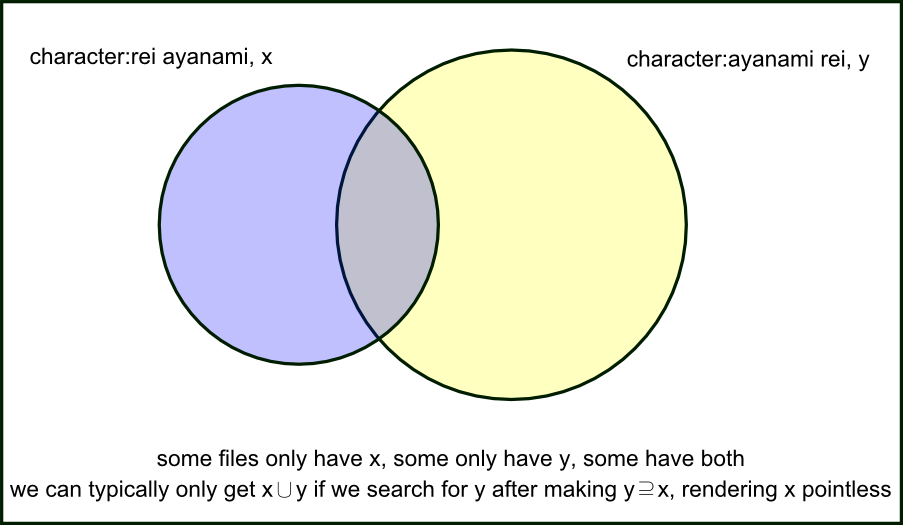
Without continual intervention by janitors or other experienced users to make sure y⊇x (i.e. making the yellow circle entirely overlap the blue by manually giving y to everything with x), searches can only return x (blue circle) or y (yellow circle) or x∩y (the lens-shaped overlap). What we really want is x∪y (both circles).
So, how do we fix this problem?
tag siblings¶
Let's define a relationship, A->B, that means that any time we would normally see or use tag A or tag B, we will instead only get tag B:
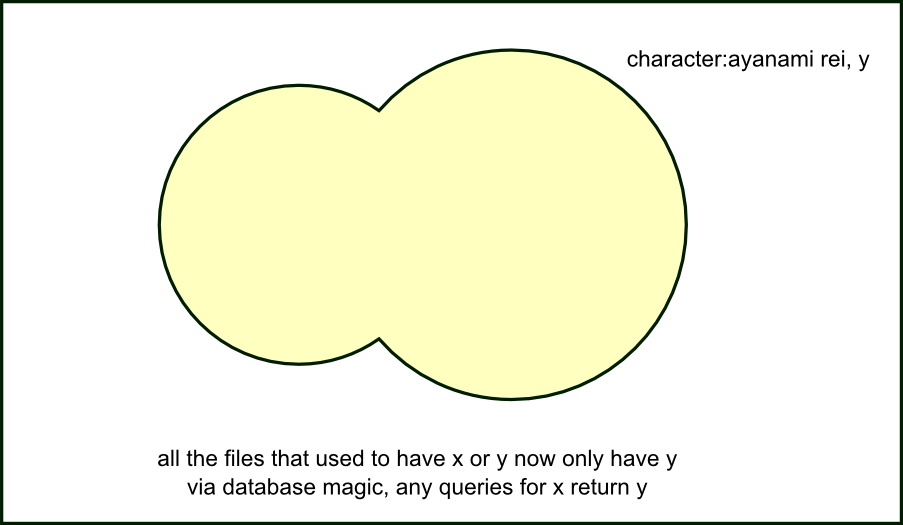
Note that this relationship implies that B is in some way 'better' than A.
ok, I understand; now confuse me¶
This relationship is transitive, which means as well as saying A->B, you can also say B->C, which implies A->C and B->C.
graph LR
A[lena_oxton] --> B[lena oxton] --> C[character:tracer];In this case, everything with 'lena_oxton' or 'lena oxton' will show 'character:tracer' instead.
You can also have an A->C and B->C that does not include A->B.
graph LR
A[d.va] --> C[character:hana 'd.va' song]
B[hana song] --> CThe outcome of these two arrangements is the same--everything ends up as C.
Many complicated arrangements are possible (and inevitable, as we try to merge many different communities' ideal tags):
graph LR
A[angela_ziegler] --> B[angela ziegler] --> I[character:dr. angela 'mercy' ziegler]
C["angela_ziegler_(overwatch)"] --> B
D[character:mercy] --> I
E["character:mercy (overwatch)"] --> I
F[dr angela ziegler] --> I
G["character:マーシー(オーバーウォッチ)"] --> E
H[overwatch mercy] --> INote that if you say A->B, you cannot also say A->C. This is an n->1 relationship. Many things can point to a single ideal, but a tag cannot have more than one ideal. Also, obviously, these graphs are non-cyclic--no loops.
how you do it¶
Just open tags->manage tag siblings, and add a few.
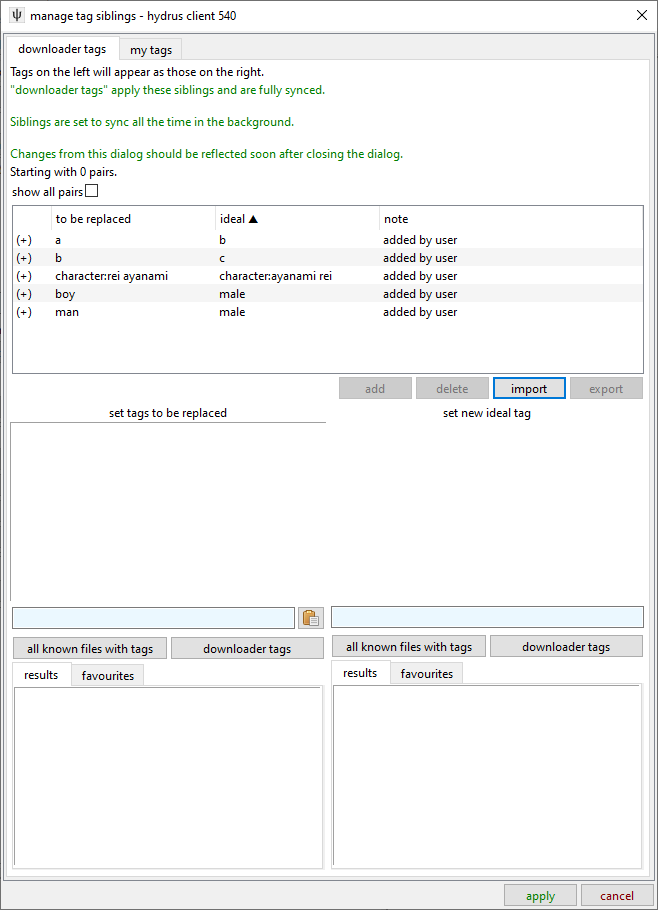
The client will automatically collapse the tagspace to whatever you set. It'll even work with autocomplete, like so:
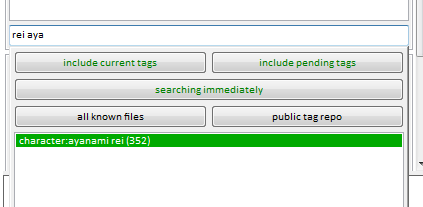
Please note that siblings' autocomplete counts may be slightly inaccurate, as unioning the count is difficult to quickly estimate.
The client will not collapse siblings anywhere you 'write' tags, such as the manage tags dialog. You will be able to add or remove A as normal, but it will be written in some form of "A (B)" to let you know that, ultimately, the tag will end up displaying in the main gui as B:
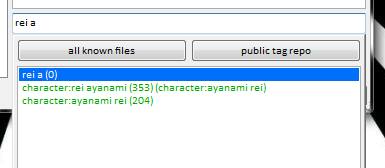
Although the client may present A as B, it will secretly remember A! You can remove the association A->B, and everything will return to how it was. No information is lost at any point.
remote siblings¶
Whenever you add or remove a tag sibling pair to a tag repository, you will have to supply a reason (like when you petition a tag). A janitor will review this petition, and will approve or deny it. If it is approved, all users who synchronise with that tag repository will gain that sibling pair. If it is denied, only you will see it.